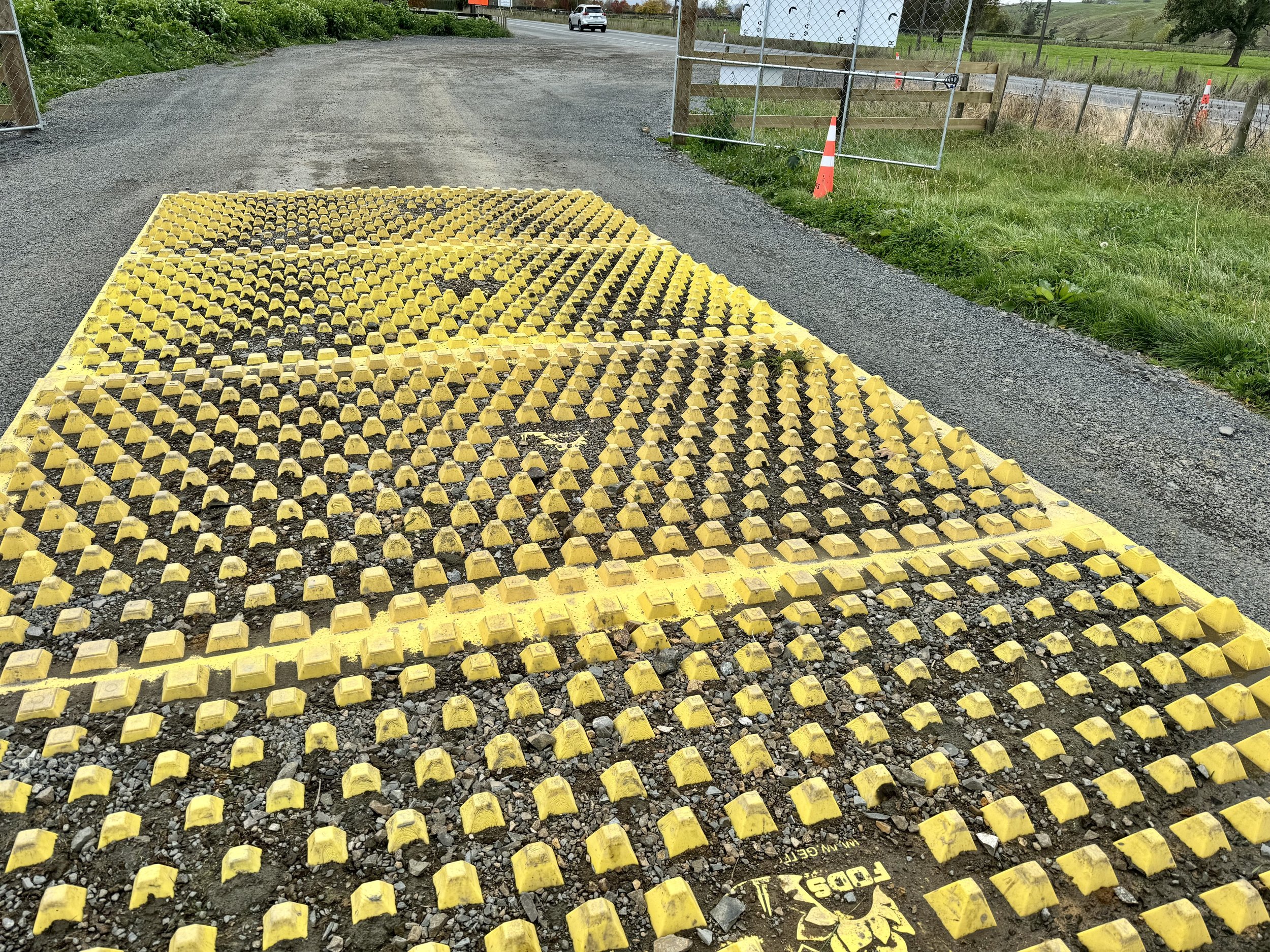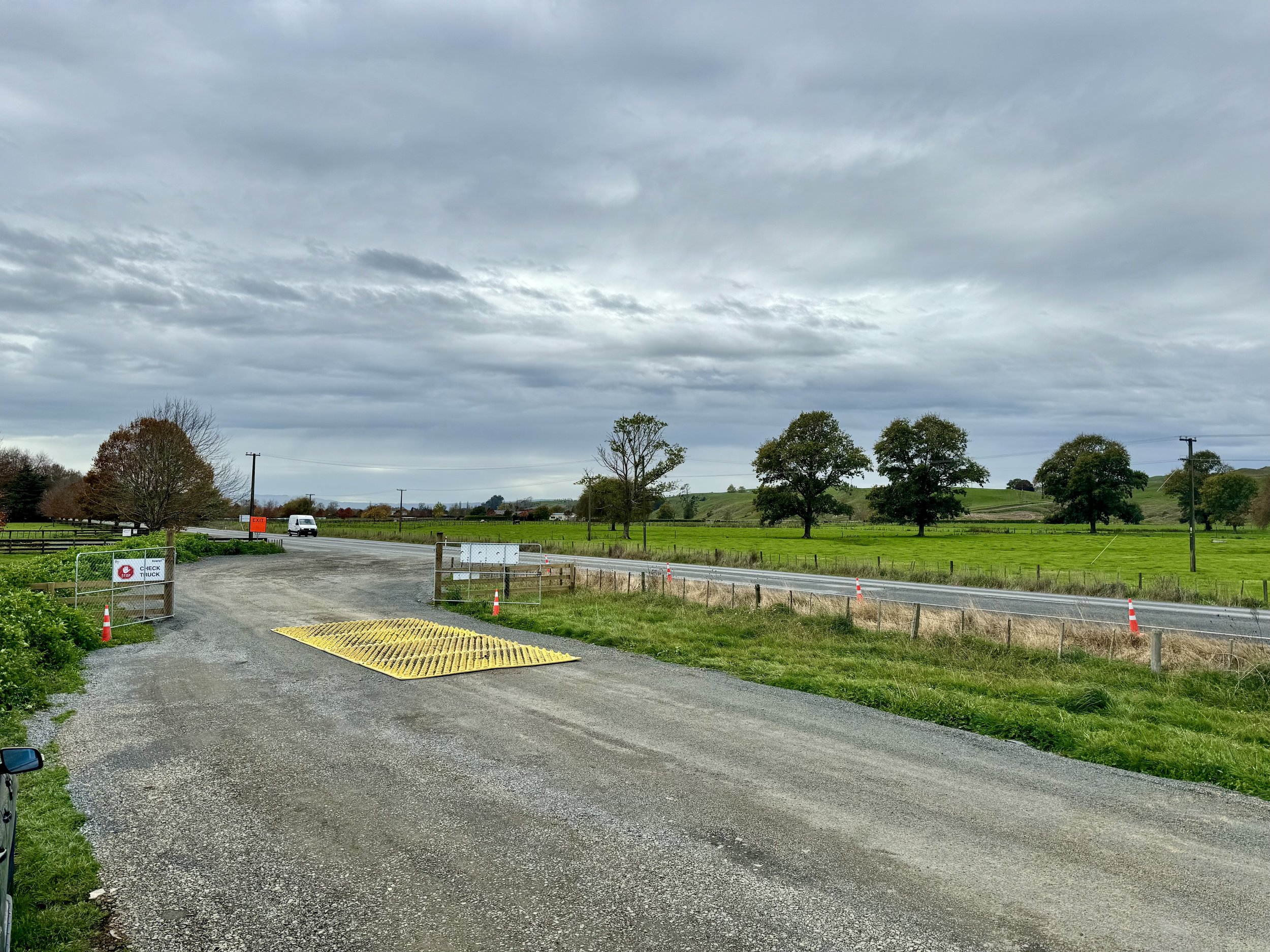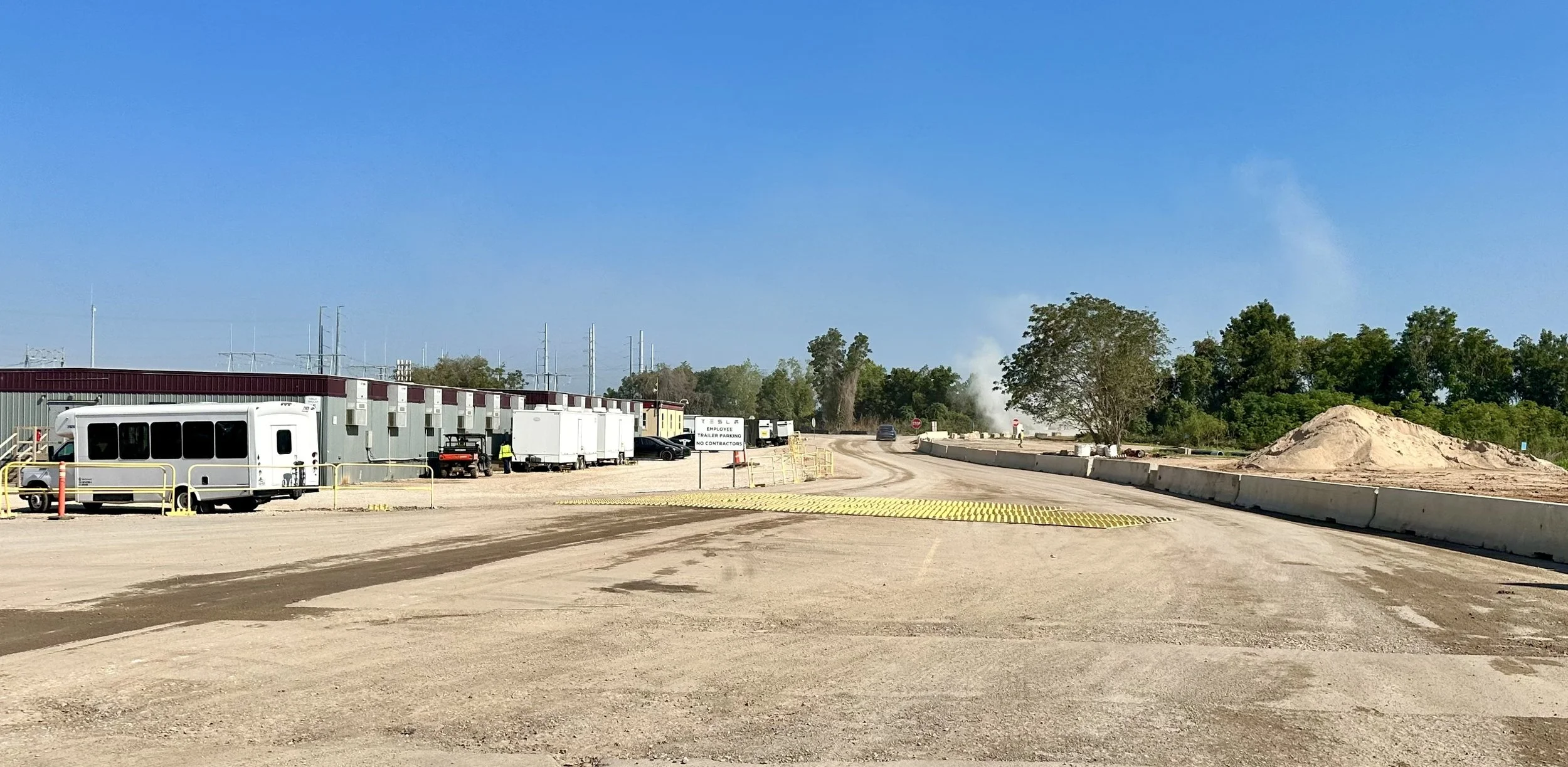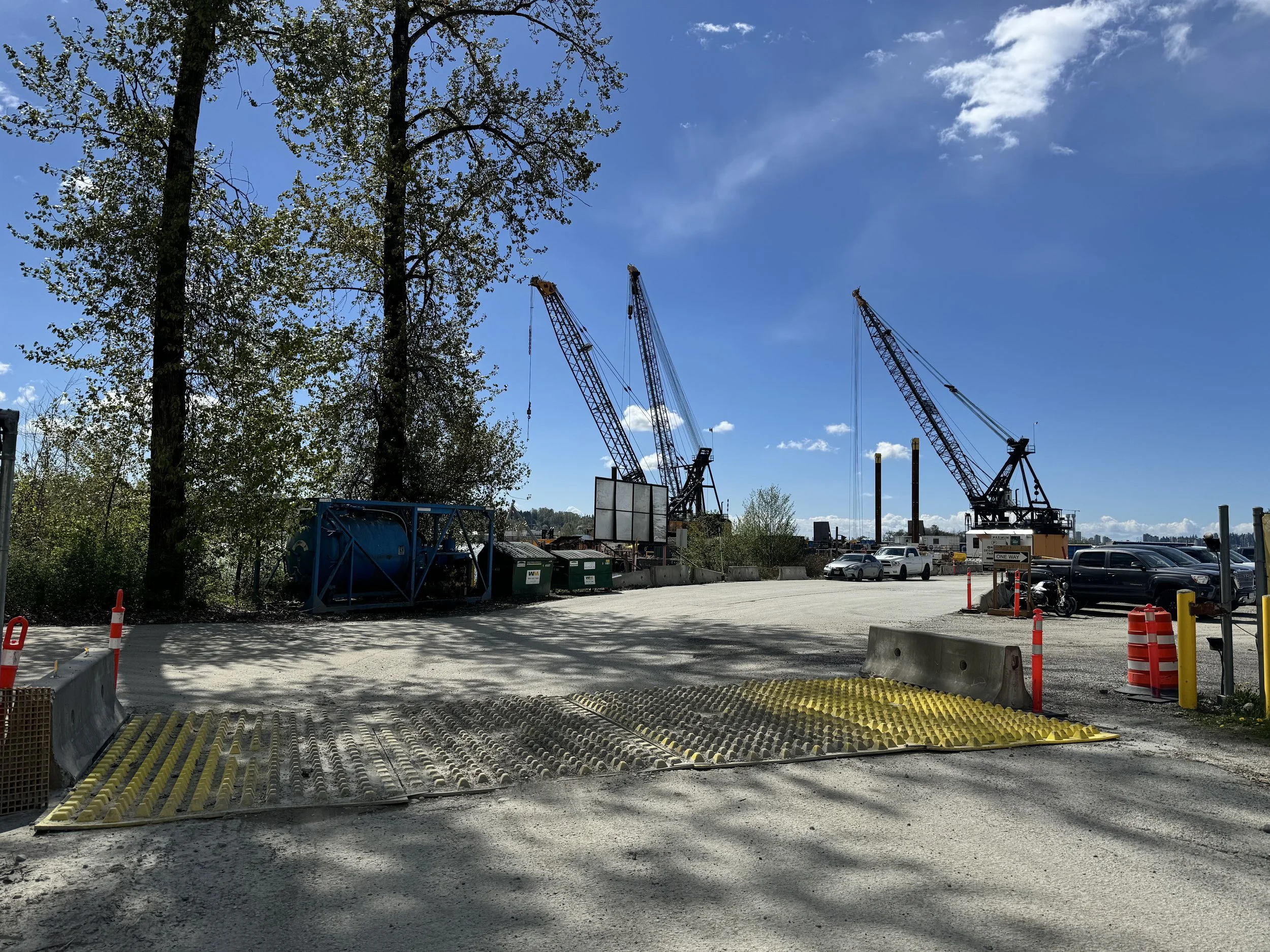FODS: PLaying the Long Game
FODS Trackout Control Mats: Featured in the April 2025 Roads and Infrastructure Magazine - Australia & New Zealand
FODS Trackout Control Mats were prominently featured in the April 2025 edition of Roads & Infrastructure Magazine Australia & New Zealand, highlighting their role in transforming sediment and erosion control practices across construction sites nationwide. The article emphasized how these reusable composite mats provide a sustainable, high-performance alternative to traditional rock entrances. Engineered with a pattern of interlocking pyramids, FODS mats effectively dislodge sediment from vehicle tires before they exit a worksite, reducing trackout and protecting nearby roadways and stormwater systems. As Australia continues investing in major infrastructure projects, solutions like FODS offer contractors a practical tool to meet environmental compliance requirements while minimizing maintenance costs.
The feature also covered FODS’ deployment on high-profile Australian projects, including the West Gate Tunnel and Metro Tunnel in Victoria. During a month-long trial on five different sites, the mats delivered significant operational and environmental benefits—most notably, a 40% reduction in street sweeping needs. Despite enduring heavy traffic, including loads from an 80-tonne piling rig, the mats retained their structural integrity, demonstrating their durability under demanding conditions. Their modular, stackable design enables easy transportation and rapid installation without the need for excavation or heavy machinery, making them an ideal solution for fast-paced infrastructure developments.
In addition to performance, the magazine article underscored the long-term economic and environmental value of FODS mats. With a lifespan of approximately 10 years and full recyclability at the end of use, the mats align with broader sustainability goals across the construction sector. Their bright yellow color enhances visibility and safety on site, while their ability to be quickly repositioned makes them adaptable to shifting project phases. As Australia’s infrastructure sector faces increasing regulatory scrutiny and environmental expectations, innovations like FODS are helping set a new standard for best management practices in trackout control.
Read the whole article from Tom O’Keane: FODS - Playing the Long Game Australia Road and Bridge April 2025 Edition
An innovative Trackout Control Mat is helping to provide a much safer, sustainable and cheaper option than conventional stabilised site access methods. The team behind FODS’ flagship product share why the system is making a splash in the Australian market.
For commercial and civil infrastructure projects in particular, industry guidelines generally dictate the need for a stabilised entry and exit point to site, which helps to minimise the exposure and spreading of sediment onto the public transport network.
Many construction sites are also required to have a mechanism in place to clean vehicle tyres in order to prevent sediment from going into the stormwater system.
In many areas, sediment control is mandated by local government, as such it’s become a primary concern and focus of project delivery.
Traditional rock entrances which are built by laying a bed of aggregate over a geotextile are a common solution, but they have limitations in terms of effectiveness and environmental impact.
So, what else is out there?
It’s the question that the folks over at FODS have been answering for years. Based and founded in the US, FODS has been developing, designing and delivering improvements to its patented Trackout Control Mats system, and helping project managers get their worksites up and running faster and cheaper.
As Nathan Barker, Director – FODS explains, the system is just as simple as it is “genius”.
“The conventional solution is to put in a 200-300 millimetre thick rock or gravel driveway, but that requires regular maintenance, the installation of additional rock, then removal and disposal at the end of the project, and in all it can end up being quite expensive and labour intensive over the length of a project,” he says.
“What this system provides is a one-time purchase solution that lasts about 10 years. The person accessing or exiting the site drives over the mat, which has engineered pyramids that are around three inches (about 75 millimetres) tall and designed to deform the tyres. All the mud and dust falls to the bottom of the mat.”
Trackout Control Mats consist of several HDPE (high-density polyethylene) mats, with vehicles only contacting the top quarter to half inch of the pyramid.
The product can be installed by two people in 30 to 40 minutes, without the need for heavy equipment.
Maintenance typically involves sweeping or shoveling off any accumulated mud or dust, which can be done as part of the regular site cleaning routine.
Following the completion of a project, the mats can be easily transported and reused, and even recycled once the end of their serviceable life span has been reached.
With a domestic distribution network in Australia, construction companies across the nation can now get their hands on the Trackout Control Mats.
In full effect
Kevin Montgomery, Technology and Innovation Manager – FODS, says the successful implementation of the system on major infrastructure projects domestically and abroad can be attributed to a variety of factors.
The first being, that FODS Trackout Control Mats are equally as effective in all working environments, regardless of rain, hail or shine, and can be installation on nearly any substrate.
“It’s just as effective removing mud, as it is dust,” Montgomery says. “It’s been on tonnes of sites in dry areas where contractors are driving along dusty roads, as soon as they hit the mats, the dust stops because they’re no longer kicking it up.”
He adds that the reusable nature of the mats allows them to be easily deployed and redeployed across multiple dry, dusty project sites, unlike rock and gravel entrances.
Another reason for the product’s success is its influence on safety.
“Our system prevents rocks from being kicked up onto the road, reducing the risk of accidents and damage to vehicles,” Barker says. “The cost of the system is nothing compared to the potential liability costs if you harm someone. It’s a very real risk.”
The Trackout Control Mats can also handle heavy equipment and vehicles of all sizes, with no practical limitations on weight or vehicle type.
It’s hard to miss the mat’s bright yellow colouring, a familiar sight across a number of major projects already in Australia, and are in use on the majority of major infrastructure projects in United States and Canada. This includes works at both NASA and SpaceX sites.
Here, in Australia, Trackout Control Mats have been used on the West Gate Tunnel and Metro Tunnel projects in Victoria, where they were deployed for a month across five different sites.
Barker says the successful trial on the West Gate Tunnel project helped to validate the product’s performance and effectiveness in the Australian market.
“It was definitely a keystone moment for us in the Australian market, as it is one of the biggest, high-profile projects in the country and one of the largest to date we’ve been a part of in Australia,” he says.
“The project team found that the mats reduced sweeping by 40 per cent. The mats also withstood the weight of heavy construction equipment, such as an 80-tonne piling rig. And this was all on a site that had over 800 truckloads of soil in total.”
As well as being easy to handle and adjust, the effectiveness of the Trackout Control Mats at a shorter distance of travel (35 feet) compared to the typical 70-foot rock entrance specification, was also noted.
Off the back of the successful trial, FODS is looking to grow in the Australian market. And if last year’s growth is any indication, both the company and the product have an exciting future ‘Down Under’.
“Last year we more than tripled our sales in Australia,” Barker says. “The amount of leads we’ve had from Australia has grown significantly. We’re really excited about our future prospects and we believe 2025 is going to be a huge year for us.”







